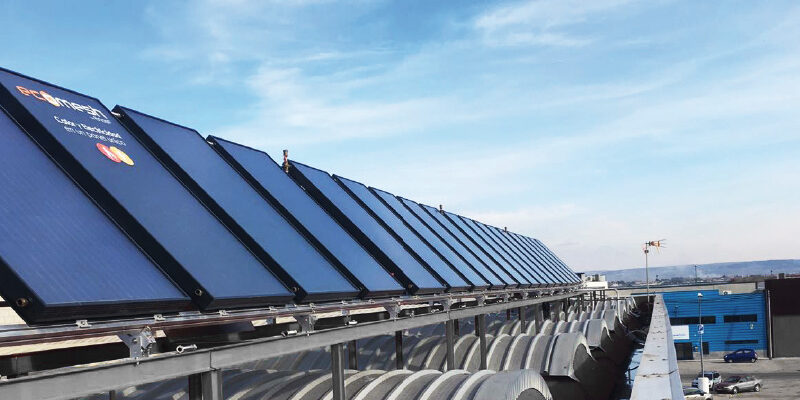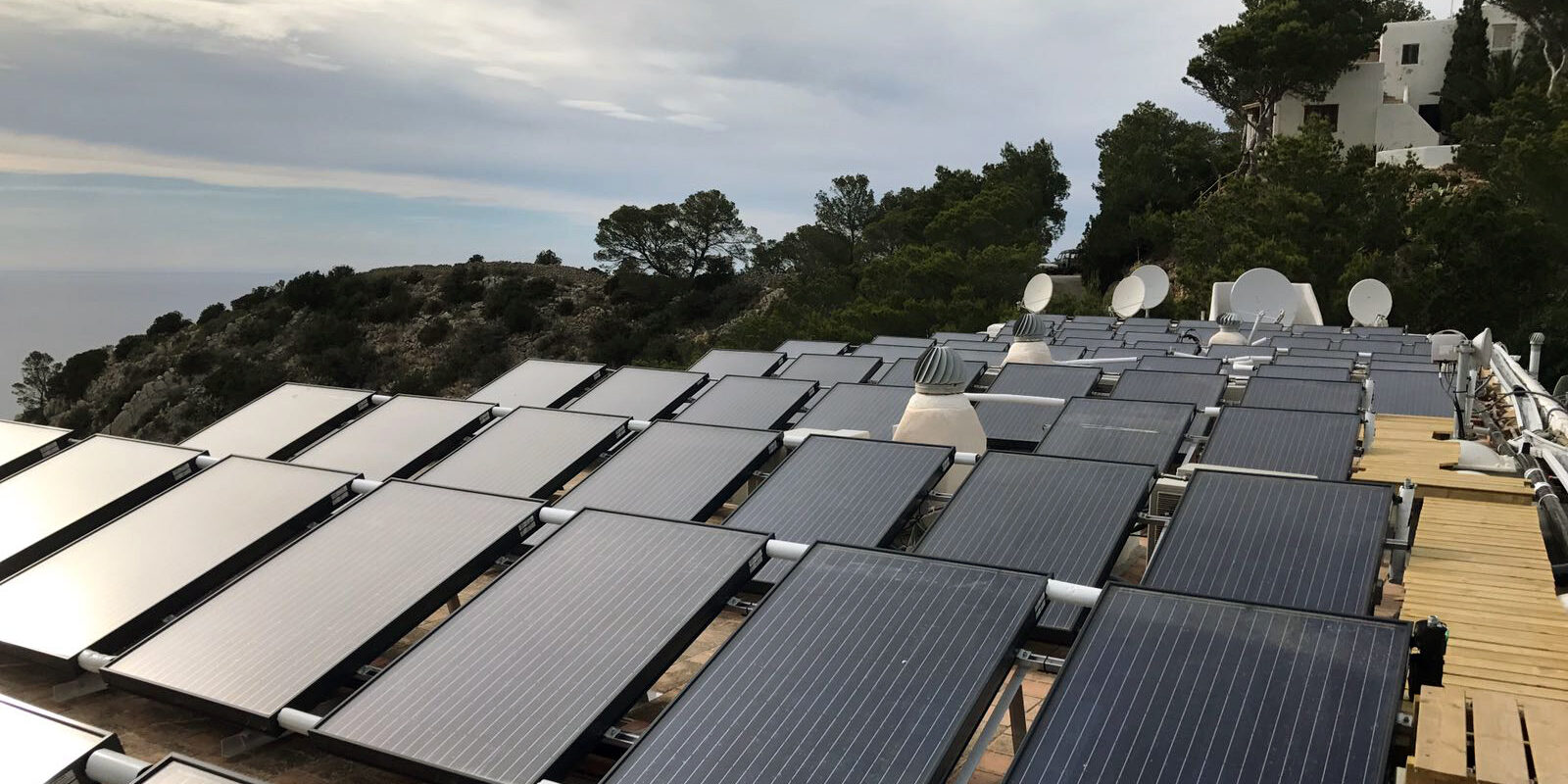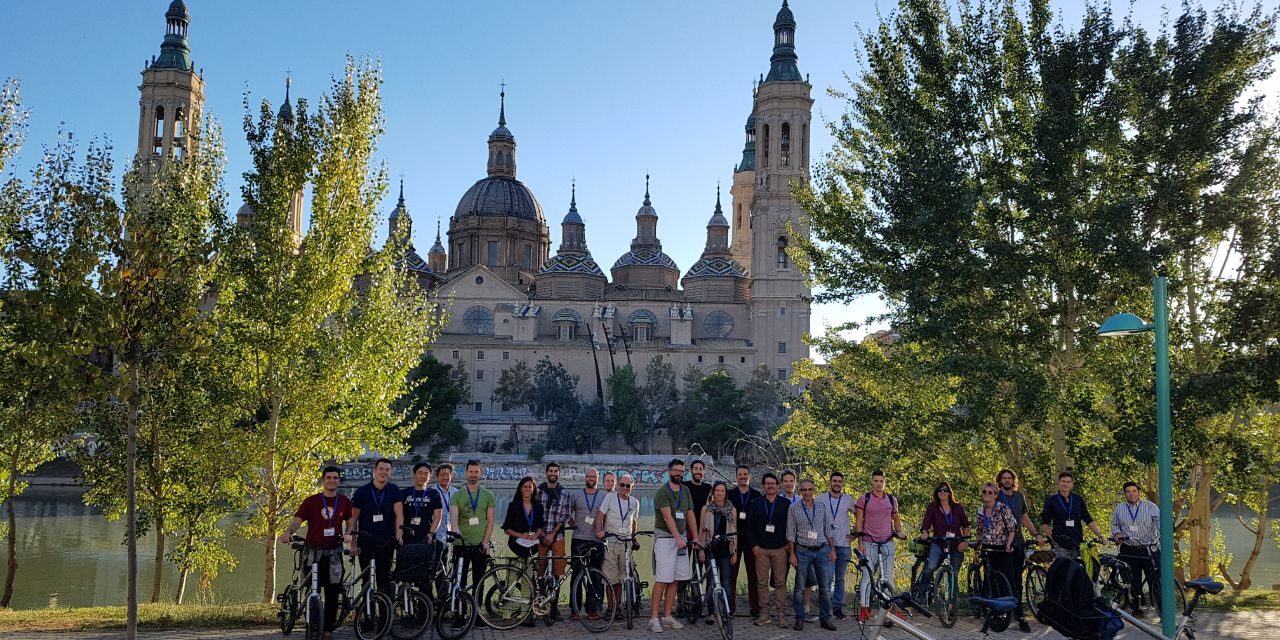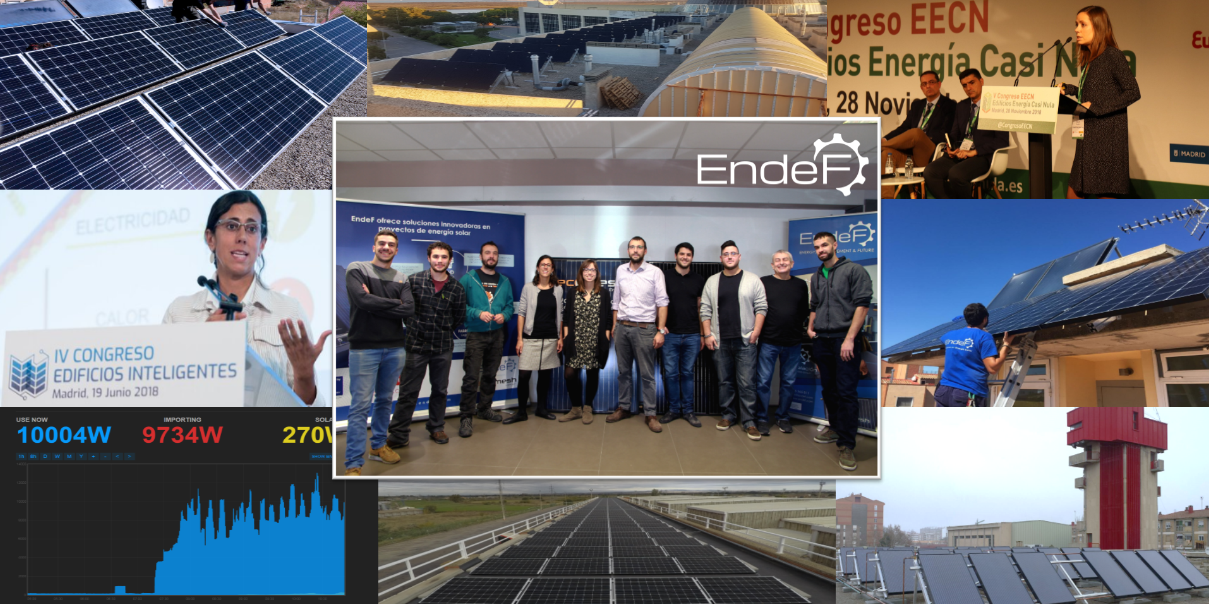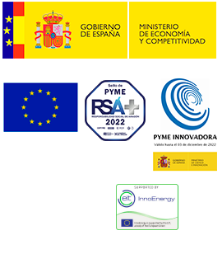First of all, we must specify that not all the radiation that comes from the atmosphere can currently be used to transform it into useful energy. If we take as a reference the global radiation that falls on the Earth’s surface (in dark gray in the graph) and imagine it falling directly on the panel’s surface, it turns out that part of the radiation is lost in the form of optical losses. What does that mean? That a percentage of the radiation is reflected or dissipated when hitting the front glass of the solar panel. This dissipated radiation usually accounts for around 10% of the incident radiation, and although it may increase depending on the type of surface on the front face of the panel, every day we work to create new crystals and geometries that reduce the losses suffered by optical reflections.
Another important factor by which energy is lost is the high temperatures, which are known as thermal losses. These losses appear when the panel exposed to the sun is gaining temperature and the outer layers of the panel (frame, glass) reach levels well above ambient temperature. Due to this difference, part of the stored energy of the radiation is lost in the form of heat, which is evacuated from the outer layers of the panel to the surrounding air, reducing the amount of useful energy that the panel can use.
At the end and in general, we can consider that from all the radiation incident on the hybrid solar panel, around 75% can be used, which is distributed in 15% of electrical energy (given the typical nominal performance of silicon photovoltaic panels commonly found in the market) and up to 60% of useful thermal energy, although the real value of thermal performance will be obtained based on the geometry, material and assembly of the internal elements of the panel.
Based on these values, at EndeF we work every day so that our hybrid solar panels optimize their performance, both thermal and photovoltaic, and maximize their operation depending on the climate and the application where they are installed.

How much electricity does a hybrid solar panel produce?
As we have explained, from the incident radiation on the photovoltaic part of a hybrid solar panel, it is estimated that only a maximum of approx. 15% can be used. (with a slight difference depending on the characteristics of the photovoltaic laminate). However, that 15% is a maximum value measured in STC (standard conditions, 25ᵒC and 1000 W / m2), which is rarely reached in a real fixed installation. Why does that happen? Mainly, for two reasons that we are going to explain now.
First of all, maximum performance only occurs when radiation is incident perpendicular to the plane of the panel cover. Since our panels remain fixed and the solar radiation changes its angle throughout the day, that perpendicular relationship occurs only during specific hours a day. If we face our panels to the east, the maximum photovoltaic production would be in the morning, when the radiation is not yet very strong. If we face them west, the same would happen but in the afternoon. To take advantage of the hours of maximum irradiation and optimize our installation, solar panels are usually installed facing south, which maximizes their electrical production.
Another important reason why the photovoltaic performance of a hybrid panel drops from the maximum is the temperature. When the panel has been exposed to the sun for a few hours, its operating temperature can rise to values of 40 – 50ᵒC, penalizing in these cases the electrical performance of the cells. In general, there is talk of a decrease of around 0.5% per ᵒC increase in silicon cells, although it may vary slightly depending on the technology. That is why the photovoltaic modules work at a higher performance in winter than in summer (although since they receive much less radiation, electricity production will continue to be lower).
Below you will find the production of a hybrid solar panel for a sunny July day. The panel is part of a real installation located in Zaragoza, with panels oriented to the south (with a deviation of 5ᵒ to the west). As Zaragoza is a very hot city in summer, the maximum electrical performance obtained in the installation is 11%.
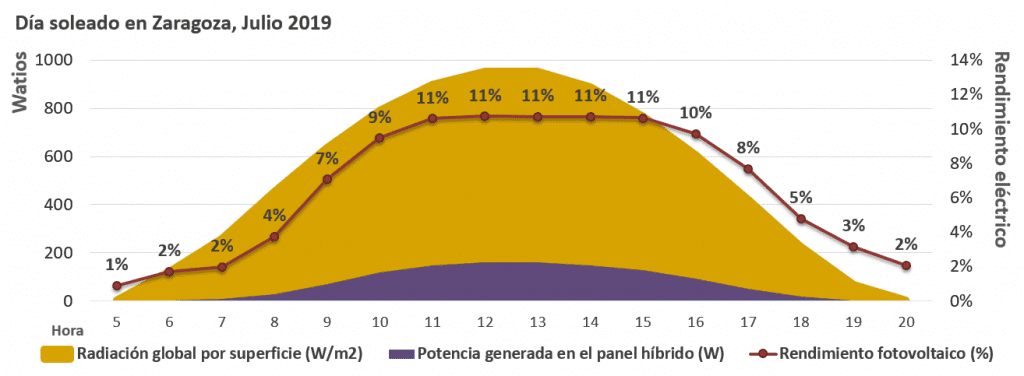
As an important point, it should be noted that the electrical production of a hybrid solar panel does not depend on the electricity consumption made by the user, which does not happen in the thermal part, as we will see below. Electricity is generated in direct current (DC) and is led to an inverter that transforms it into alternating current (AC), from which it will be distributed to the user’s consumption, batteries or electrical network depending on the type of installation.
How much heat does it produce?
The thermal energy generated in a hybrid solar panel is not so easy to calculate, because it depends on the type of installation and the user’s consumption habits. What does it mean? Well, how much and when is thermal energy consumed, that is, domestic hot water (DHW).
In a simple and conventional thermal installation of solar panels, the water circulates through an internal circuit: the water enters warm or cold in the solar field, it is heated as it passes through the interior of the panels and at the outlet it is led to a tank where it is kept warm and stored. It is from this tank that the user will get hot water when they need it. This circuit is called the solar circuit and has specific operating rules, that is, it will only work when we have, for example, a minimum level of radiation or we are generating water at a higher temperature than what we have in the tank.
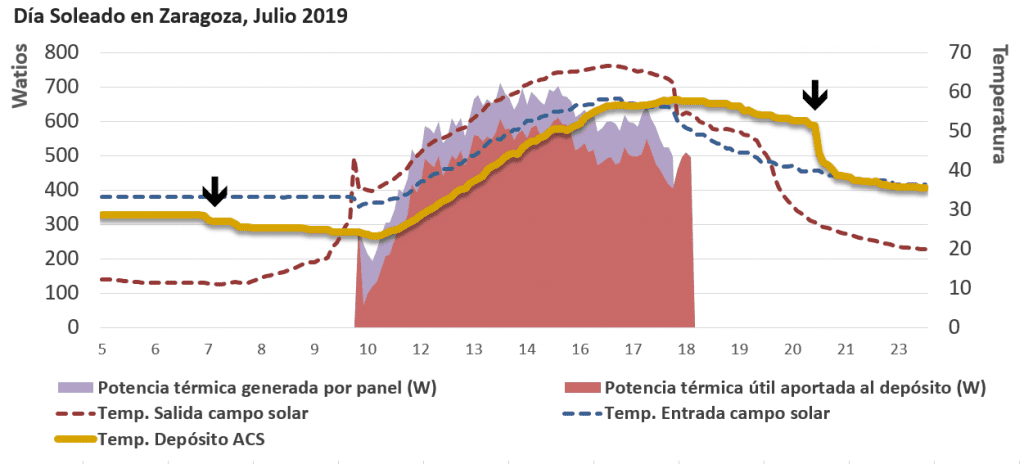
To explain it better, we attached a thermal generation graph of the hybrid installation that we were talking about earlier. There we can see the temperature of the water before entering the panels (blue) when leaving the panels (red) and that stored in the tank (yellow), as well as the gross and useful thermal production. It should not be forgotten that the objective of the installation from the beginning is to try to have the tank at the required service temperature, which in Spain for the ACS is 60ᵒC.
In the graph we see that the installation does not start working until almost 10 am when a higher temperature at the outlet of the panels is reached than that stored in the tank. At that moment, the circulatory pump starts to work and the hot water extracted from the panels is taken to the accumulation tank, which is heated. The facility continues to operate throughout the day, until at 6pm the temperature of the tank reaches 60ᵒC, which has been set as the objective. Since it is understood that no more energy needs to be supplied, the pump turns off and the installation stops producing energy.
This particular situation happens because in this installation there are only two key moments of heat demand by the user, marked with arrows on the graph. One occurs at 7 in the morning, probably with the morning showers, and another at 8:30 p.m. At both moments it is observed how the temperature of the tank decreases. If this demand occurred during the day (in the interval between 10 – 18h), the temperature of the water that re-enters the panels would be colder and the operating time of the installation would be extended. In other words, if there were more daytime demand, the facility would produce more.
The graph also shows two painted areas, which refer to the thermal power generated in each of the panels (purple area) and the power that reaches the tank useful (red area). Why do they differ? Because in the components of thermal installations (pipes, pumps, valves, etc.) certain losses occur in the form of heat, which means that not all the energy generated in the panels can be used. That yes, thanks to the isolation those losses are becoming smaller.
And in the hybrid solar panels … do all this happen?
Effectively. In a hybrid solar panel, the two processes explained occur at the same time, so that we can simultaneously obtain electricity and hot water for our daily consumption. The values shown here correspond to an installation of Ecomesh hybrid panels, it is one of the models that we manufacture and produce at EndeF; that thanks to its patented technology, its CTA cover has a thermal performance above other market models.
After reading this entry, you can already consider yourself an expert in hybrid solar panels, despite any questions or comments that may arise, from EndeF we are at your disposal to solve them. Doubts like will the hybrid panels fit into my installation? How much can i save? Do not hesitate and contact us!
See you soon in a new entry for “Solar Energy for Beginners”!
